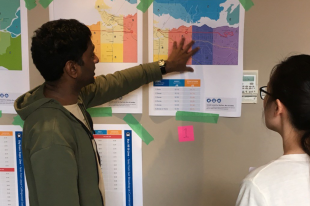OECD: “This compendium of good practices was prepared by the OECD at the request of the G20 Anti-corruption Working Group (ACWG), to raise awareness of the benefits of open data policies and initiatives in:
- fighting corruption,
- increasing public sector transparency and integrity,
- fostering economic development and social innovation.
This compendium provides an overview of initiatives for the publication and re-use of open data to fight corruption across OECD and G20 countries and underscores the impact that a digital transformation of the public sector can deliver in terms of better governance across policy areas. The practices illustrate the use of open data as a way of fighting corruption and show how open data principles can be translated into concrete initiatives.
The publication is divided into three sections:
Section 1 discusses the benefits of open data for greater public sector transparency and performance, national competitiveness and social engagement, and how these initiatives contribute to greater public trust in government.
Section 2 highlights the preconditions necessary across different policy areas related to anti-corruption (e.g. open government, public procurement) to sustain the implementation of an “Open by default” approach that could help government move from a perspective that focuses on increasing access to public sector information to one that enhances the publication of open government data for re-use and value co-creation.
Section 3 presents the results of the OECD survey administered across OECD and G20 countries, good practices on the publishing and reusing of open data for anti-corruption in G20 countries, and lessons learned from the definition and implementation of these initiatives. This chapter also discusses the implications for broader national matters such as freedom of press, and the involvement of key actors of the open data ecosystem (e.g. journalists and civil society organisations) as key partners in open data re-use for anti-corruption…(More)”.

